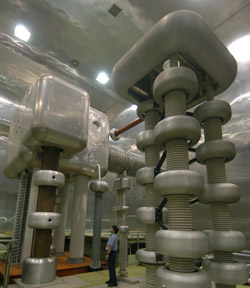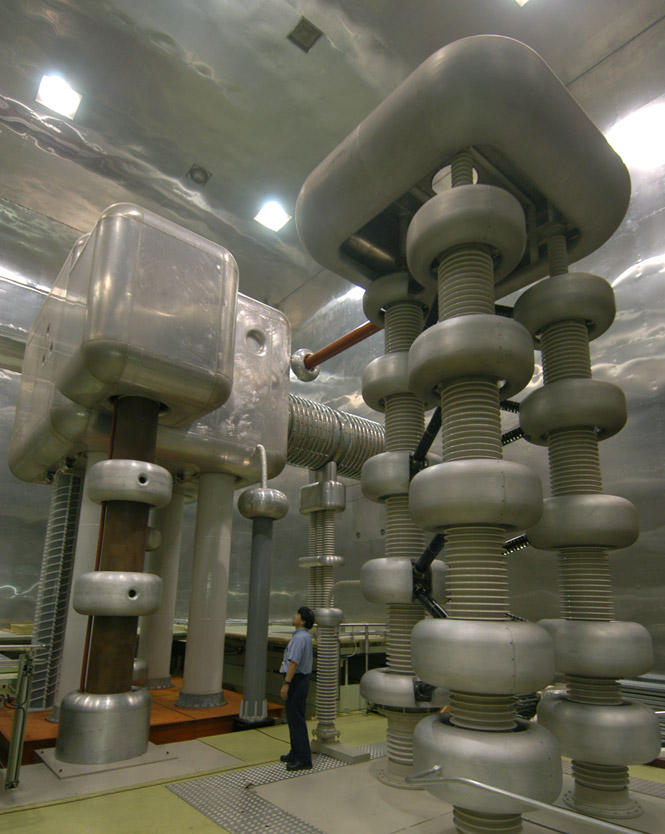The Case of the Disappearing Mass
According to theory, some particles have a different mass in empty space than they do in an atomic nucleus. In the 26 January Physical Review Letters, researchers describe evidence for such an effect in a new particle–one made of “strange” quarks, rather than the ordinary quarks found in protons and neutrons. The findings may help guide theorists trying to understand how the masses of larger particles arise from their internal quarks and force fields.
Baryons (such as neutrons and protons) and mesons are composite particles, made of quarks. Almost all of their mass derives from the energy contained in the strong nuclear force that holds them together, rather than from their component quarks. Force fields don’t account for much mass outside the quantum world, but even a stretched rubber band weighs a tiny bit more than a relaxed one. When mesons or baryons are crammed close together, strong forces acting between them interfere with the strong forces within them, which theorists have shown reduces their mass. Verifying this effect experimentally is part of researchers’ broader goal: to understand how meson and baryon properties arise from their internal quarks’ interactions. Calculations involving the strong force are difficult and involve some approximations, so experiments are essential for checking the theory.
So far the effect has shown up in particles containing up and down quarks, including protons, neutrons, and two exotic mesons called the rho and the omega. But the results have been controversial because they conflict with some other experiments that suggested no mass reduction at all. Now researchers at KEK, the High Energy Accelerator Research Organization in Tsukuba, Japan, led by Hideto En’yo of RIKEN, a Japanese research institute, hope they have swayed some critics by observing the effect in the phi meson, which is made of a strange and an anti-strange quark. The mass reduction is less dramatic for these heavier quarks, but by collecting data from more collisions, and making more precise measurements of the products flying out of these collisions, the team found the 3.4 percent reduction in mass predicted by theory.
The experimenters fired protons from the KEK accelerator into targets of either carbon or copper. Collisions of beam protons with the nuclei created showers of particles including phi mesons. The phis then quickly decayed–sometimes before leaving the nucleus where they were created–giving off electron-positron pairs and other particles. The team measured the energy of the pairs with high precision and used the results to gauge the mass of the phi that produced them.
After tracking hundreds of thousands of collisions, the researchers found a skew in the data toward lower mass. The phi’s mass distribution was different in the larger copper nuclei than in the smaller carbon nuclei because it could more easily escape the smaller nuclei before decaying. The team hadn’t seen such a difference between carbon and copper targets in their earlier rho and omega data because those mesons have shorter lifetimes. But seeing it for the phi gave them extra confidence in the results.
“It is a carefully executed and analyzed experiment, and I believe that the evidence is strong for a mass shift” of the phi meson, says Mannque Rho of the French Atomic Energy Commission (CEA) in Saclay. He notes that the different mass reductions for different mesons is consistent with a theoretical model that he developed with Gerald Brown of the State University of New York at Stony Brook. That model, he adds, represents one of several theoretical attempts to understand exactly how quark binding determines the masses of mesons and baryons, and “it will be ultimately up to the experimentalists” to show which theoretical approach is best.
–Mason Inman
Mason Inman is a freelance science writer in San Francisco.





